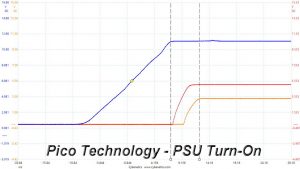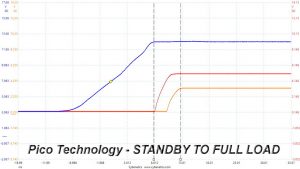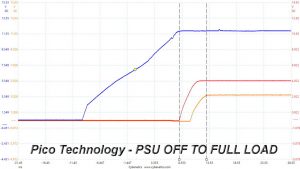Protection Features
Our protection features evaluation methodology is described in detail here.
|
Protection |
|
|
OCP |
12V: 64.8A (119.62%), 11.999V |
|
OPP |
788.3W (121.28%) |
|
OTP |
✓ (140°C @ 12V Heatsink) |
|
SCP |
12V: ✓ |
|
PWR_OK |
Accurate (but lower than 16ms) |
|
NLO |
✓ |
|
SIP |
Surge: MOV |
The OCP triggering points at +12V and 5V are reasonably set, while at 3.3V and 5VSB are higher than the normal, which usually is around 130%. The over power protection is configured properly and the over temperature protection works well.
As expected, there is short circuit protection on all rails and the power ok signal is accurate, however it is much lower than 16ms. Finally, there is an MOV for surge protection and the large inrush currents are suppressed by a NTC thermistor, which is supported by a bypass relay.
DC Power Sequencing
According to Intel’s most recent Power Supply Design Guide (revision 1.4) the +12V and 5V voltages must be equal or greater than the 3.3V rail’s output at all times, during the power-up and normal operation. For our first measurement, we turn the unit off and switch it back on without any load in any of the rails.
In the second test, we set the PSU to standby mode, dial full load and start it afterwards. In the last test, while the power supply is completely switched off (we cut off the power or switch the supply off through its power switch), we dial full load before restoring power.
In all cases the 3.3V rail's voltage is lower than +12V and 5V, as the ATX spec requires.
 KitGuru KitGuru.net – Tech News | Hardware News | Hardware Reviews | IOS | Mobile | Gaming | Graphics Cards
KitGuru KitGuru.net – Tech News | Hardware News | Hardware Reviews | IOS | Mobile | Gaming | Graphics Cards





